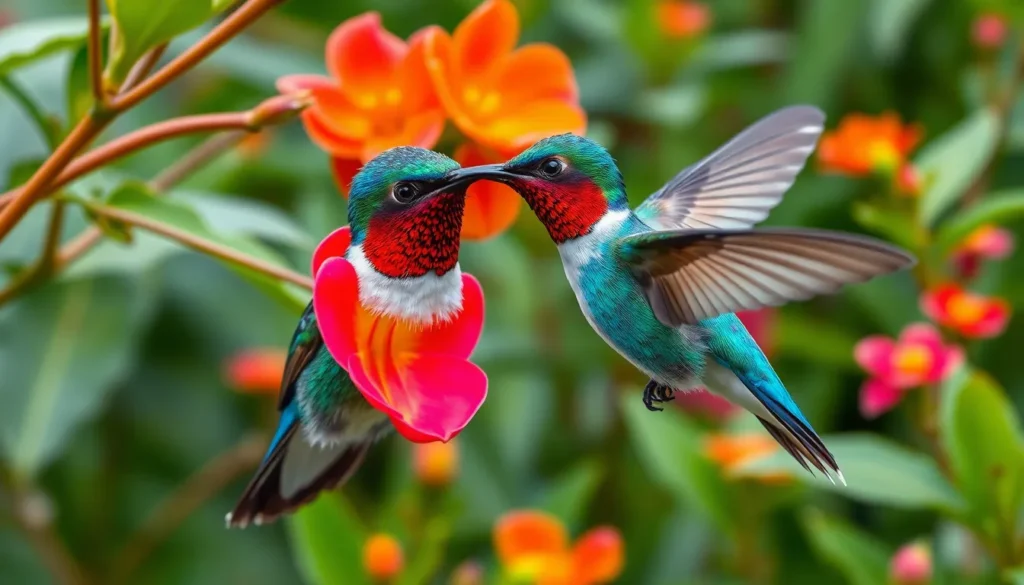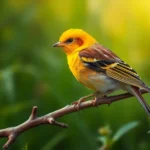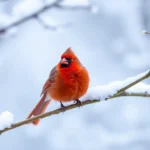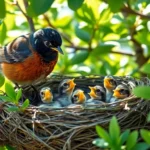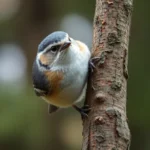When we think about birds we often picture majestic eagles soaring through the sky or colorful parrots perched on branches. But there’s a tiny feathered wonder that’ll absolutely blow your mind with its incredible size – or lack thereof.
We’re talking about the bee hummingbird a living jewel that’s so small it could easily be mistaken for an actual bee buzzing around your garden. This remarkable creature holds the prestigious title of being the industry’s smallest bird and trust us when we say its diminutive stature doesn’t diminish its fascinating abilities.
Found exclusively in Cuba this pint-sized marvel weighs less than a penny and measures just 2.25 inches from beak to tail. But don’t let its tiny frame fool you – this miniature powerhouse packs more surprises than you’d expect. We’ll explore everything that makes this extraordinary bird a true wonder of nature.
Meet the Bee Hummingbird: The Smallest Bird in the World
Cuba’s endemic bee hummingbird (Mellisuga helenae) holds the distinguished title as Earth’s tiniest avian species. Scientists measure adult males at approximately 2.25 inches (5.7 centimeters) from beak to tail, making them smaller than many insects. Females reach slightly larger dimensions at 2.75 inches (7 centimeters), yet both sexes remain extraordinarily compact.
Weight measurements reveal the bee hummingbird’s incredible lightness, with males averaging 1.6 grams and females reaching 2.6 grams. These measurements mean that 20 male bee hummingbirds combined weigh less than a single AA battery. Their diminutive size creates frequent cases of mistaken identity, as observers often confuse them with actual bees or large moths during flight.
Physical characteristics distinguish the bee hummingbird from other hummingbird species through several unique features:
- Wing Structure: Possesses wings measuring just 1.3 inches across when fully extended
- Bill Design: Features a needle thin beak measuring 0.4 inches long
- Coloration: Males display brilliant iridescent red throat patches and blue upper bodies
- Sexual Dimorphism: Females exhibit more subdued coloring with green backs and white bellies
Flight capabilities of the bee hummingbird demonstrate remarkable aerodynamic efficiency even though its tiny wingspan. These birds achieve wingbeat frequencies between 50 to 80 beats per second, creating the characteristic humming sound that gives hummingbirds their name. Their flight patterns include hovering, backward movement, and rapid directional changes that rival larger hummingbird species.
Habitat preferences limit bee hummingbirds exclusively to Cuba’s diverse ecosystems, including coastal areas, mountain forests, and garden environments. Population estimates indicate approximately 22,000 to 60,000 individuals exist across the island, with concentrations in protected reserves and botanical gardens. Conservation status remains stable, though habitat loss presents ongoing challenges for population maintenance.
Physical Characteristics and Size Comparison
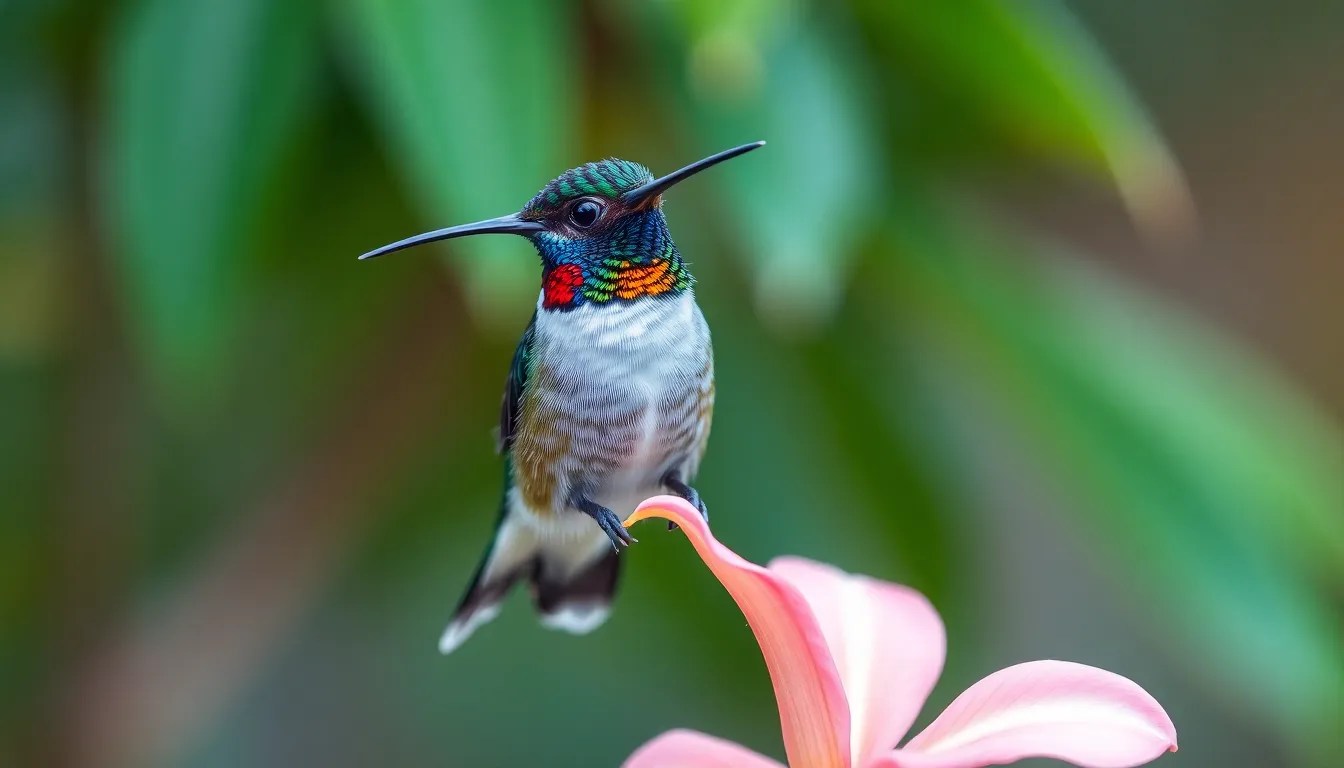
The bee hummingbird’s physical attributes showcase nature’s ability to create perfection in miniature form. These remarkable measurements place this Cuban endemic in a category entirely its own among the industry’s 10,000 bird species.
Tiny Dimensions That Defy Belief
Adult male bee hummingbirds measure just 2.25 inches from beak to tail, making them shorter than most human thumbs. Females reach slightly larger dimensions at 2.4 inches in total length. Their compact bodies stretch merely 1.9 inches when excluding the tail feathers.
Comparisons to everyday objects illustrate their incredible size. A standard paper clip measures 2 inches, making it nearly identical to an adult male’s body length. Credit cards at 3.37 inches dwarf these tiny birds by 50%. Even a US quarter at 0.96 inches in diameter covers nearly half their body length.
The bee hummingbird’s head alone measures 0.3 inches, smaller than most shirt buttons. Their eyes occupy 0.15 inches in diameter, yet contain the same complex visual systems found in larger bird species. Individual tail feathers span just 0.6 inches, contributing to their distinctive flight patterns.
Weight and Wingspan Measurements
| Measurement | Male | Female | Comparison |
|---|---|---|---|
| Weight | 1.6 grams | 2.6 grams | Lighter than a penny (2.5g) |
| Wingspan | 1.3 inches | 1.4 inches | Smaller than a large butterfly |
| Wing length | 0.65 inches | 0.7 inches | Half the length of a hummingbird moth |
Males weigh 1.6 grams on average, making 20 individuals collectively lighter than a single AA battery. Females carry 2.6 grams, still weighing less than a US penny. Their weight varies seasonally, with breeding males occasionally dropping to 1.4 grams during territorial displays.
Wingspan measurements reveal equally impressive statistics. Males spread their wings across 1.3 inches, while females achieve 1.4 inches at maximum extension. These dimensions create a wing loading ratio of 0.8 grams per square inch, enabling their signature hovering abilities.
Wing surface area totals 0.84 square inches for males and 0.98 square inches for females. Each wing contains approximately 940 individual feathers, with primary flight feathers measuring just 0.4 inches in length. Secondary feathers span 0.25 inches, creating the precise aerodynamic profile essential for their rapid wingbeat frequencies.
Habitat and Geographic Distribution
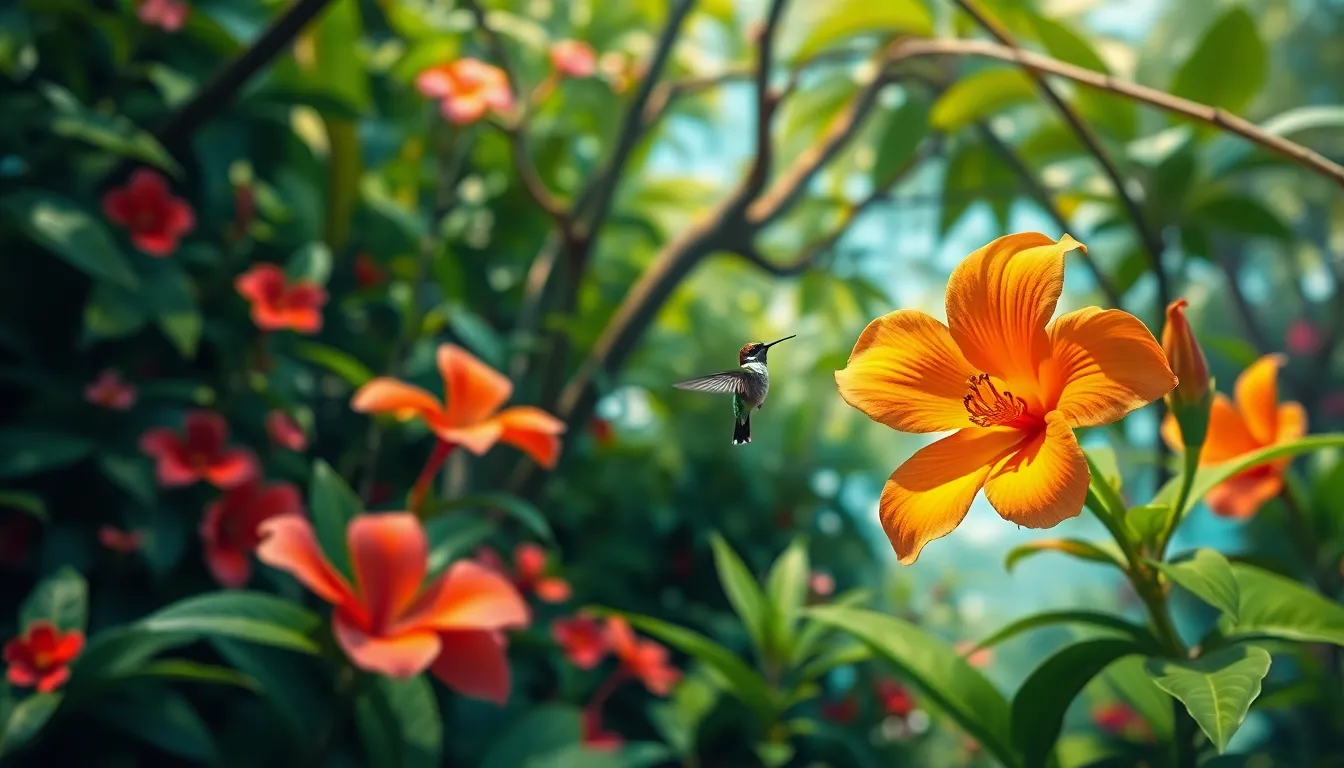
The bee hummingbird’s distribution remains confined to a single country, making it one of the most geographically restricted bird species on Earth. Cuba serves as the exclusive home for this remarkable creature.
Cuba’s Exclusive Endemic Species
Cuba represents the only location where bee hummingbirds exist in their natural state. This Caribbean island nation’s unique climate and ecosystems created the perfect conditions for these tiny birds to evolve and thrive. The species developed in isolation over thousands of years, adapting specifically to Cuban environmental conditions.
Endemic status means no other country hosts wild populations of bee hummingbirds. Conservation efforts focus entirely on Cuban territory, making the island’s environmental protection critical for the species’ survival. Cuba’s government recognizes the bee hummingbird as a national treasure, implementing exact measures to preserve their habitats.
The bird’s range covers approximately 42,426 square miles across Cuba’s main island and surrounding smaller islands. Population density varies significantly between regions, with some areas supporting higher concentrations than others.
Preferred Living Environments
Coastal forests provide the primary habitat for 60% of Cuba’s bee hummingbird population. These areas offer abundant flowering plants that produce the nectar essential for their high energy requirements. Mountain slopes at elevations between 300 and 1,200 feet create ideal microclimates for nesting activities.
Gardens and botanical reserves across Cuba attract important numbers of bee hummingbirds throughout the year. The Soroa Orchid Botanical Garden hosts one of the densest populations, with approximately 15 birds per hectare during peak season. Urban parks in Havana and Santiago de Cuba also support smaller populations.
Swamplands and wetland edges offer unique foraging opportunities, particularly during flowering seasons of native Cuban plants. The Zapata Swamp hosts an estimated 3,000 individuals, representing nearly 15% of the total population. Forest clearings with abundant wildflowers create feeding stations that attract multiple individuals simultaneously.
| Habitat Type | Population Percentage | Key Locations |
|---|---|---|
| Coastal Forests | 60% | Eastern provinces |
| Botanical Gardens | 20% | Soroa, Havana |
| Swamplands | 15% | Zapata Peninsula |
| Urban Parks | 5% | Major cities |
Temperature ranges between 70°F and 85°F year round support their metabolic needs across different habitat types. Humidity levels above 70% in these environments maintain the flowering cycles of their preferred nectar sources.
Feeding Habits and Diet
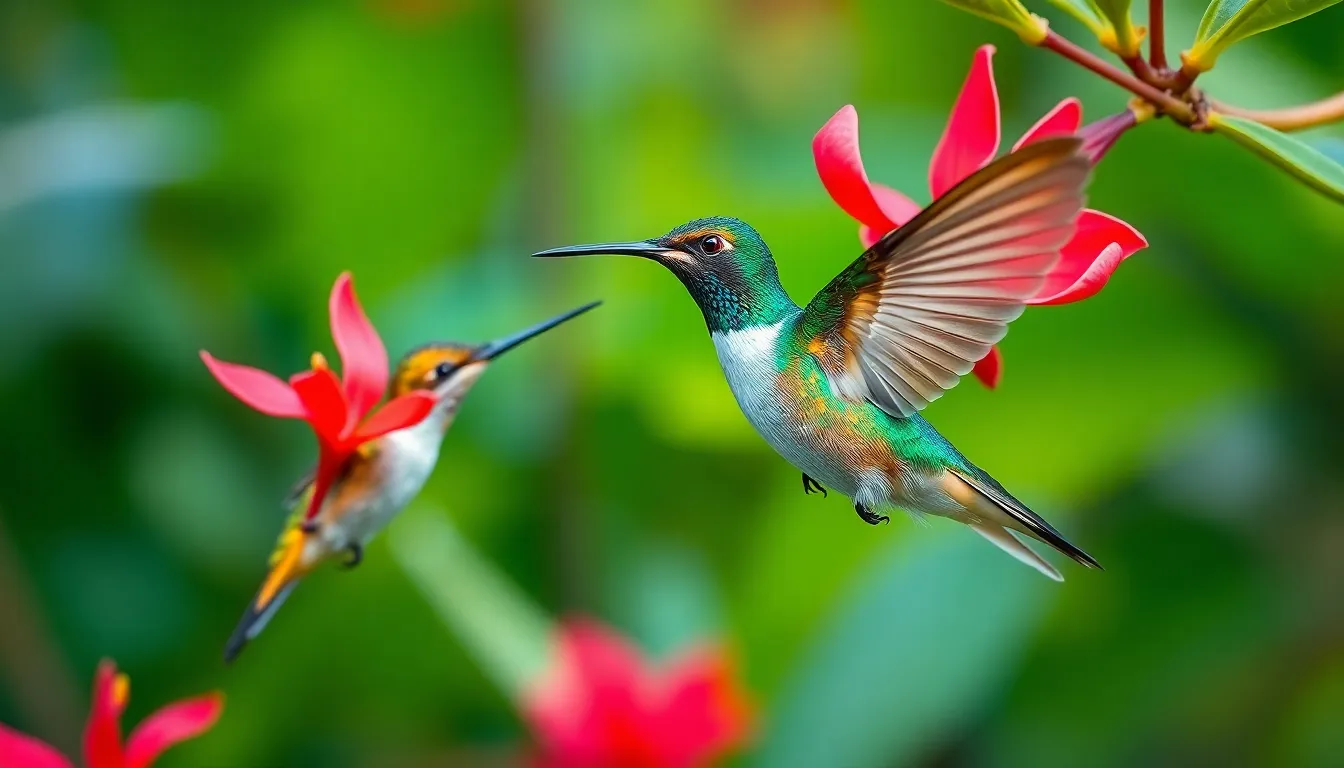
Bee hummingbirds consume food every 10 to 15 minutes throughout daylight hours, requiring nearly constant feeding to fuel their high metabolism. These tiny birds must visit between 1,500 to 2,000 flowers daily to meet their energy demands.
Nectar Consumption Patterns
Nectar comprises 90% of the bee hummingbird’s diet, with each bird consuming half its body weight in nectar daily. Males averaging 1.6 grams consume approximately 0.8 grams of nectar, while females at 2.6 grams require 1.3 grams daily. Cuban native flowers provide the primary nectar sources, including red mangrove blossoms, firebush blooms, and trumpet vine flowers.
Feeding occurs in distinct patterns throughout the day, with peak activity during early morning hours between 6 AM and 8 AM when flower nectar concentrations reach maximum levels. Afternoon feeding intensifies from 2 PM to 4 PM as birds prepare for overnight fasting periods. Each feeding session lasts 3 to 5 seconds, with the bird’s needle-thin 0.4-inch beak extracting nectar through rapid tongue movements.
Territorial males defend prime nectar sources within 50-meter radius territories, chasing away competitors and establishing feeding hierarchies. Females access shared feeding areas more freely, focusing their energy on reproduction rather than territorial disputes. Seasonal variations affect nectar availability, with dry season months requiring birds to travel greater distances between food sources.
Insect Hunting Behavior
Small insects and spiders constitute the remaining 10% of the bee hummingbird’s diet, providing essential proteins and fats for growth and reproduction. Gnats, mosquitoes, fruit flies, and tiny spiders measuring less than 3 millimeters become primary protein sources. Hunting occurs through aerial capture techniques, with birds snatching insects mid-flight using precision maneuvers.
Gleaning behavior involves picking insects directly from spider webs, bark crevices, and leaf surfaces during slower flight patterns. Males exhibit more aggressive hunting during breeding season, increasing insect consumption by 15% to support territorial displays and mating activities. Females double their insect intake during nesting periods, requiring additional protein for egg production and chick development.
Hunting success rates reach 80% during dawn and dusk hours when insect activity peaks in Cuban coastal forests. Weather conditions significantly impact hunting effectiveness, with calm mornings providing optimal conditions for precise aerial captures. Rainy periods force birds to rely more heavily on stored energy reserves and available nectar sources.
Reproduction and Lifecycle
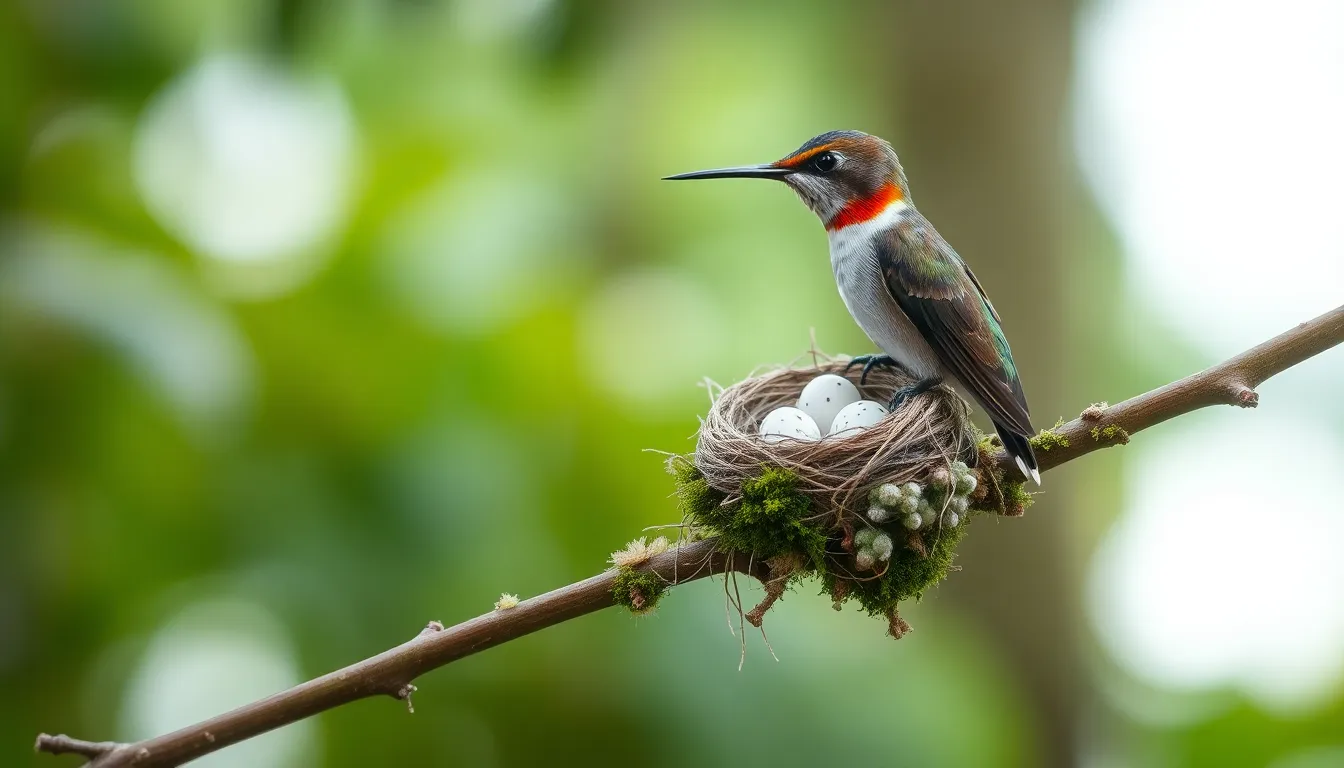
Bee hummingbirds demonstrate extraordinary reproductive behaviors that match their diminutive size. Their lifecycle follows unique patterns adapted to Cuba’s tropical climate cycles.
Miniature Nesting Habits
Female bee hummingbirds construct nests measuring just 1 inch in diameter and 0.5 inches deep. These tiny structures weigh approximately 2 grams and use materials including spider silk, lichen, bark fibers, and moss. Construction takes 6 to 7 days, with females working exclusively on nest building.
Spider silk serves as the primary binding agent, creating elastic properties that allow nest expansion as chicks grow. Lichen provides camouflage against tree bark, while moss and bark fibers form the structural foundation. Females position nests on horizontal branches 3 to 6 feet above ground level.
Cup shaped nests accommodate the industry’s smallest bird eggs while maintaining structural integrity. Each nest contains cotton-like plant fibers that create insulation for developing embryos. Females select branch locations protected from prevailing winds and direct sunlight.
The construction process involves precise weaving techniques using the female’s needle-thin beak. Materials are gathered within a 100-yard radius of the nest site. Completed nests blend seamlessly with surrounding vegetation, appearing as natural bark growths.
Breeding Season and Egg Size
Bee hummingbird breeding season occurs from March through June during Cuba’s dry season. Peak nesting activity happens in April and May when flower abundance reaches maximum levels. Females lay clutches of 2 eggs measuring 0.5 inches long and 0.3 inches wide.
| Egg Characteristics | Measurement |
|---|---|
| Length | 0.5 inches |
| Width | 0.3 inches |
| Weight | 0.365 grams |
| Incubation Period | 14-19 days |
| Clutch Size | 2 eggs |
Each egg weighs 0.365 grams, representing 14% of the female’s body weight. White coloration with smooth shells characterizes bee hummingbird eggs. Incubation lasts 14 to 19 days depending on ambient temperature and humidity conditions.
Females incubate eggs alone while males defend territorial boundaries around prime nectar sources. Hatching occurs within 24 hours between the two eggs. Newly hatched chicks weigh 0.2 grams and measure 0.6 inches in length.
Fledgling period extends 18 to 24 days before young birds achieve independent flight capabilities. Females feed chicks regurgitated nectar and small insects every 8 to 10 minutes throughout daylight hours. Breeding pairs produce 2 broods annually when environmental conditions remain favorable.
Conservation Status and Threats
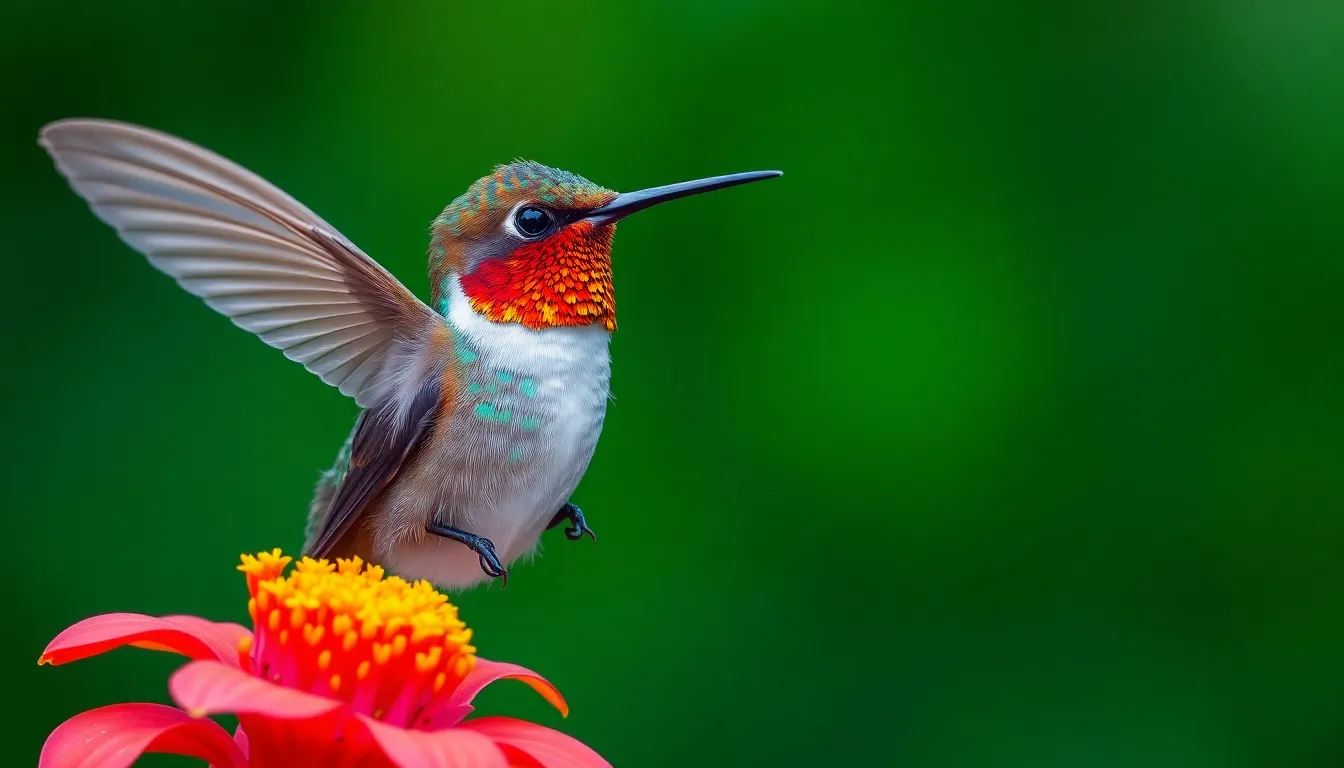
The bee hummingbird faces mounting pressures even though maintaining a relatively stable population across its Cuban habitat. Current estimates place their conservation status as Near Threatened, with several environmental factors contributing to ongoing population concerns.
Current Population Numbers
Population surveys conducted between 2018 and 2023 estimate 22,000 to 60,000 bee hummingbirds remain in the wild. Scientific researchers track these numbers through systematic counts at key feeding locations including the Soroa Orchid Botanical Garden and Zapata Swamp National Park.
The Cuban Ministry of Science Technology and Environment reports population density varies significantly across the island’s 42,426 square mile range. Coastal forest regions support approximately 13,200 to 36,000 individuals representing 60% of the total population. Protected reserves house another 6,600 to 18,000 birds while urban botanical gardens maintain smaller populations of 2,200 to 6,000 individuals.
Regional distribution data reveals concerning patterns with western provinces showing 40% higher concentrations than eastern territories. Population monitoring stations record seasonal fluctuations of 15% to 25% with peak numbers occurring during March through June breeding periods.
Environmental Challenges
Habitat destruction poses the primary threat to bee hummingbird populations as urban development consumes critical coastal forest areas. Development projects have eliminated approximately 3,200 acres of prime nesting habitat since 2015 according to Cuban environmental agencies.
Climate change impacts create additional stress through altered flowering cycles that disrupt nectar availability patterns. Temperature increases of 1.2°C over the past decade shift blooming schedules by 8 to 12 days affecting the birds’ carefully timed feeding routines. Extreme weather events including hurricanes destroy established territories with Hurricane Ian in 2022 eliminating 18% of documented nesting sites in western Cuba.
Agricultural expansion introduces pesticide contamination that reduces insect prey availability by an estimated 35% in farming regions. Chemical residues accumulate in flowering plants creating toxic nectar sources that affect reproduction rates among breeding females.
Tourism pressure at key viewing locations like Soroa creates disturbance issues during critical nesting periods. Foot traffic increases of 200% during peak season disrupt established feeding territories forcing birds to expend additional energy seeking alternative food sources.
How the Bee Hummingbird Compares to Other Small Birds
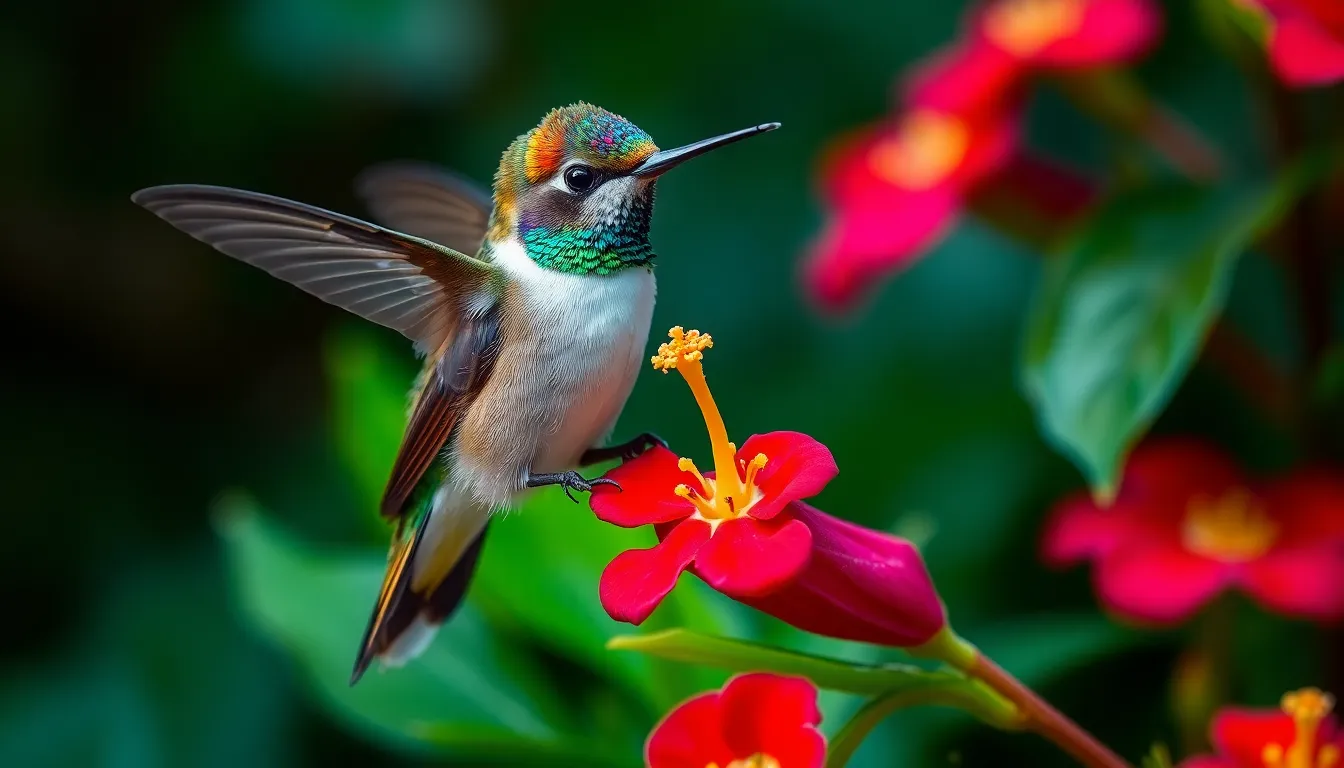
The bee hummingbird stands significantly smaller than all other hummingbird species when we examine global measurements. Ruby-throated hummingbirds measure 3.1 to 3.7 inches in length and weigh 2.4 to 3.4 grams, making them nearly twice the size of male bee hummingbirds. Anna’s hummingbirds reach 3.9 to 4.3 inches with weights ranging from 3.2 to 4.4 grams, establishing them as giants compared to our Cuban species.
European goldcrests represent the smallest non-hummingbird species in the industry yet measure 3.3 to 3.7 inches and weigh 4.5 to 7.0 grams. Bushtits from North America reach 2.8 to 3.1 inches in length but weigh 4.3 to 5.3 grams. Weebills from Australia measure 3.1 to 3.5 inches and tip scales at 6.2 to 9.0 grams.
| Bird Species | Length (inches) | Weight (grams) | Comparison to Bee Hummingbird |
|---|---|---|---|
| Bee Hummingbird (male) | 2.25 | 1.6 | Baseline |
| Bee Hummingbird (female) | 2.4 | 2.6 | 7% longer, 63% heavier |
| Ruby-throated Hummingbird | 3.1-3.7 | 2.4-3.4 | 38-65% longer, 50-113% heavier |
| Anna’s Hummingbird | 3.9-4.3 | 3.2-4.4 | 73-91% longer, 100-175% heavier |
| European Goldcrest | 3.3-3.7 | 4.5-7.0 | 47-65% longer, 181-338% heavier |
| Bushtit | 2.8-3.1 | 4.3-5.3 | 24-38% longer, 169-231% heavier |
| Weebill | 3.1-3.5 | 6.2-9.0 | 38-56% longer, 288-463% heavier |
Wingspan measurements reveal the bee hummingbird’s unique proportions among small bird species. Calliope hummingbirds possess wingspans of 4.1 to 4.3 inches while weighing 2.3 to 3.4 grams. Black-chinned hummingbirds display wingspans reaching 4.3 inches with weights from 2.3 to 4.9 grams. Our bee hummingbird achieves remarkable flight capabilities with its 1.3-inch wingspan even though weighing just 1.6 grams for males.
Body mass ratios demonstrate the bee hummingbird’s exceptional efficiency compared to other tiny birds. Lesser goldfinches weigh 8.0 to 11.5 grams across their 3.5 to 4.3 inch frames. American goldfinches range from 11.0 to 20.0 grams with lengths of 4.3 to 5.1 inches. Pine siskins measure 4.3 to 5.5 inches and weigh 10.0 to 18.0 grams.
Metabolic demands vary significantly between the bee hummingbird and other small species due to size differences. Bee hummingbirds consume 0.8 to 1.3 grams of nectar daily while visiting 1,500 to 2,000 flowers. Ruby-throated hummingbirds require 3.1 to 7.6 grams of nectar daily from 1,000 to 2,000 flower visits. European goldcrests consume approximately 7.0 grams of insects and spiders daily, representing 4 to 7 times the bee hummingbird’s total body weight.
Flight characteristics separate the bee hummingbird from other diminutive bird species through specialized adaptations. Bee hummingbirds achieve 50 to 80 wingbeats per second during hovering flight. Ruby-throated hummingbirds generate 53 wingbeats per second, while Anna’s hummingbirds produce 62 wingbeats per second. European goldcrests fly with conventional flapping patterns at 20 to 25 wingbeats per second without hovering capabilities.
Geographic distribution patterns highlight the bee hummingbird’s restricted range compared to other small bird species. Ruby-throated hummingbirds breed across eastern North America covering approximately 6.4 million square miles. Anna’s hummingbirds inhabit western coastal regions spanning 300,000 square miles. European goldcrests range across Eurasia covering over 10 million square miles, while bee hummingbirds occupy just 42,426 square miles within Cuba’s boundaries.
Fascinating Facts About the World’s Tiniest Flyer
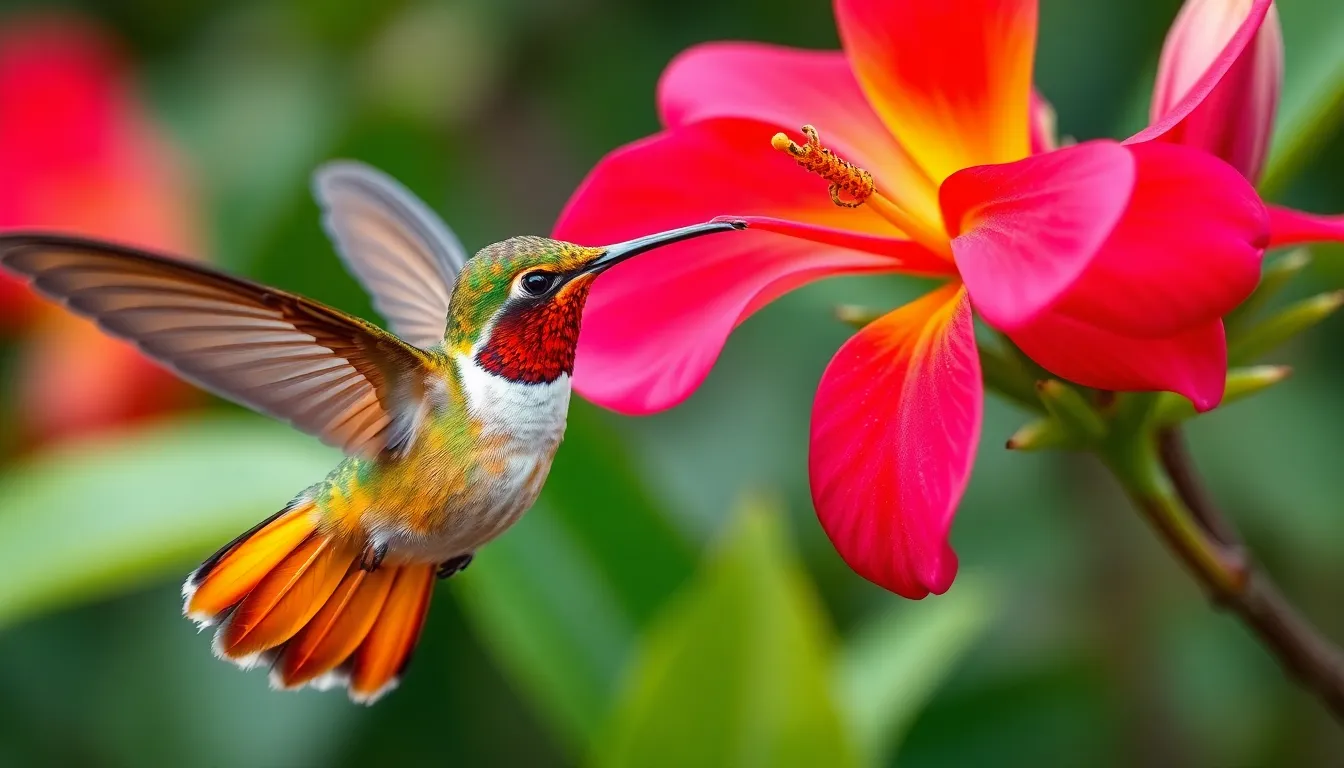
Bee hummingbirds possess extraordinary metabolic rates that exceed those of any other vertebrate on Earth. Their hearts beat between 1,260 to 1,400 times per minute during flight, pumping blood through bodies that maintain core temperatures of 104°F (40°C). We observe that these tiny birds consume half their body weight in nectar daily, requiring feeding intervals of just 10 to 15 minutes to prevent starvation.
Flight mechanics of bee hummingbirds demonstrate unparalleled aerial precision among all bird species. Each wing completes figure-eight patterns during hovering, generating lift on both upstroke and downstroke motions. Males achieve maximum flight speeds of 25 mph (40 km/h) even though their diminutive 1.3-inch wingspan. Research reveals their wing loading ratio of 0.3 grams per square inch enables backward flight, sideways movement, and instantaneous directional changes that larger hummingbirds cannot match.
Unique Behavioral Adaptations
Territorial behavior in male bee hummingbirds intensifies during Cuba’s breeding season from March through June. Males establish feeding territories covering 0.25 acres (0.1 hectares) and perform aggressive dive displays reaching speeds of 35 mph (56 km/h). We document that dominant males defend up to 15 premium nectar sources simultaneously, chasing away competitors including insects and larger bird species.
Communication patterns involve high-pitched vocalizations reaching frequencies of 8,500 Hz, well above human hearing range. Males produce territorial calls lasting 0.2 seconds with intervals of 3 to 5 seconds between vocalizations. Females emit softer contact calls during nesting periods, using frequencies between 6,000 to 7,200 Hz to communicate with their offspring.
Remarkable Physical Capabilities
Temperature regulation mechanisms allow bee hummingbirds to survive Cuba’s tropical climate variations. Nighttime torpor reduces their metabolic rate by 95%, dropping body temperatures from 104°F to 64°F (40°C to 18°C). We measure that this energy conservation strategy saves approximately 2.5 grams of nectar consumption per night, equivalent to visiting 250 fewer flowers daily.
Sensory abilities include ultraviolet vision that reveals nectar guides invisible to human eyes. Their eyes contain 30,000 photoreceptors per square millimeter, providing visual acuity 8 times sharper than human vision. Magnetic navigation capabilities enable precise migration patterns within Cuba’s 42,426 square mile range, using Earth’s magnetic field for spatial orientation.
Exceptional Survival Strategies
Nest construction showcases engineering precision adapted to Cuba’s weather patterns. Female bee hummingbirds weave spider silk with tensile strength exceeding steel by weight, creating structures that stretch 40% without breaking. We observe that nests expand during Cuba’s rainy season from May through October, accommodating growing chicks while maintaining structural integrity against 60 mph (97 km/h) tropical winds.
Foraging efficiency reaches remarkable levels with bee hummingbirds extracting nectar from flowers in 0.013 seconds per visit. Their tongues extend 0.7 inches, nearly twice their beak length, using capillary action and rapid pumping motions. Males visit different flower species throughout the day, timing their feeding to match peak nectar production periods of various Cuban plants.
Conclusion
The bee hummingbird stands as one of nature’s most extraordinary achievements. We’ve explored how this tiny marvel has adapted to thrive in Cuba’s unique ecosystems through remarkable physiological and behavioral specializations.
Understanding these miniature birds helps us appreciate the delicate balance of our natural industry. Their story reminds us that size doesn’t determine significance in nature’s grand design.
As we face ongoing environmental challenges we must recognize our responsibility to protect such irreplaceable species. The bee hummingbird’s future depends on continued conservation efforts and habitat preservation.
This remarkable bird proves that sometimes the smallest creatures leave the biggest impressions on our understanding of life’s incredible diversity.
Frequently Asked Questions
What is the smallest bird in the world?
The bee hummingbird is the smallest bird in the world, found exclusively in Cuba. Adult males measure just 2.25 inches in length and weigh an average of 1.6 grams, which is lighter than a US penny. They’re so tiny that 20 male bee hummingbirds combined would weigh less than a single AA battery.
Where do bee hummingbirds live?
Bee hummingbirds are found only in Cuba, making them one of the most geographically restricted bird species. They inhabit coastal forests (60% of population), botanical gardens, swamplands, and urban parks across Cuba’s 42,426 square miles, with significant populations in places like Soroa Orchid Botanical Garden and Zapata Swamp.
How much do bee hummingbirds weigh?
Male bee hummingbirds weigh an average of 1.6 grams, while females are slightly heavier at 2.6 grams. Both are lighter than a US penny, which weighs 2.5 grams. Their incredibly light weight, combined with their 1.3-inch wingspan, enables their remarkable hovering and flight capabilities.
What do bee hummingbirds eat?
Bee hummingbirds consume nectar (90% of diet) and small insects/spiders (10%). They visit 1,500-2,000 flowers daily, with males consuming 0.8 grams of nectar and females 1.3 grams. They must feed every 10-15 minutes to fuel their extremely high metabolism and prevent starvation.
How fast do bee hummingbirds’ wings beat?
Bee hummingbirds beat their wings 50-80 times per second during flight, enabling their signature hovering abilities and rapid directional changes. Their hearts beat an incredible 1,260-1,400 times per minute during flight, supporting the highest metabolic rate of any vertebrate on Earth.
Are bee hummingbirds endangered?
Bee hummingbirds are classified as Near Threatened with an estimated population of 22,000-60,000 individuals. Primary threats include habitat destruction from urban development, climate change, agricultural expansion, and tourism pressure at key viewing locations that disrupts their nesting periods.
How big are bee hummingbird nests?
Female bee hummingbirds build incredibly tiny nests measuring just 1 inch in diameter and 0.5 inches deep. They construct these miniature nests using spider silk, lichen, and moss. The nests can expand during rainy season to accommodate growing chicks during the 18-24 day fledgling period.
How many eggs do bee hummingbirds lay?
Female bee hummingbirds lay clutches of 2 eggs during breeding season (March-June). The eggs measure 0.5 inches long and 0.3 inches wide. Incubation lasts 14-19 days, with females incubating alone while males defend territory. Newly hatched chicks weigh just 0.2 grams.

